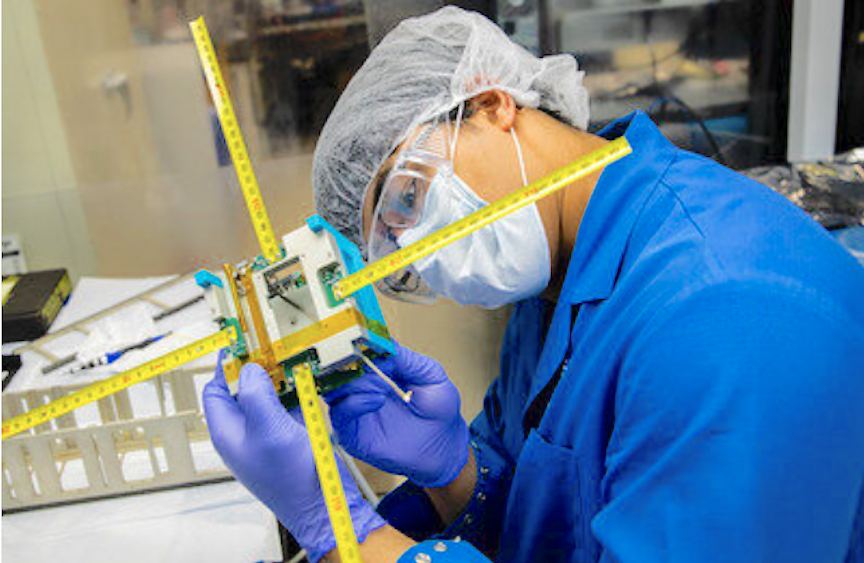Staying afloat in space can be deceptively hard. Just ask the characters from Gravity, or any number of the hundreds of small satellites that fall into the atmosphere in a given year. Any object placed in low Earth orbit (LEO) must constantly fight against the drag caused by the small number of air molecules that make it up to that height.
Usually they counteract this force by using small amounts of propellant. However, smaller satellites don’t have the luxury of enough propellant to keep them afloat for any period of time. But now a team of students from the University of Michigan has launched a prototype satellite that attempts to stay afloat using a novel technique – magnetism.
The project, known as the Miniature Tether Electrodynamics Experiment (MiTEE), launched today on Virgin Galactic’s flight from the Mojave Desert. It’s interdisciplinary team consists of undergraduate through PhD Students at UofM. This is the first project the team has launched, and represents the culmination of six years of effort.
Credit: University of Michigan
That effort resulted in a novel satellite (or more accurately a pair of satellites) that test an even more novel idea – that small enough satellites can use the Earth’s own magnetic field to achieve a small amount of lift.
To test this theory, the team has designed a pair of satellites, one about the size of a loaf of bread, the other one the size of a smartphone, that are connected together via a span of wire. A current is then induced in that wire, and physics gets to do its magic.

Credit: Robert Coelius / Michigan Engineering
One of the fundamental laws of electromagnetism is that when a current is present in a magnetic field, the magnetic field will exert a force on the conductor containing the current. Since the Earth’s magnetosphere is present up to LEO, there is also a magnetic field present there. MiTEE plans to use the current in the tether between its two satellites to push the paired satellites upward and fight against the combination of air drag and gravity that are pulling them down.
For the first version launching this weekend, known as MiTEE-1, there will be a single 1 meter long rigid boom connecting the two satellites. It will focus on measuring how much current, if any, can be induced by the ionosphere, another feature of the space immediately surrounding Earth. Follow-on projects would test the tether for use as an actual antenna, and try to measure whether it would be feasible to completely float a pico-satellite system without any propellant.
Credit: University of Michigan
It will probably be a few years until a second system flies, given that the entire workforce for this project are volunteer college students. In the meantime, they will have plenty of data to parse, and hopefully a major cause for celebration, when MiTEE-1 starts collecting data after a successful launch.
Learn More:
UofM – Pioneering a way to keep very small satellites in orbit
MiTEE Home Page
SmallSat News – U of Michigan Students Keep Very Small Satellites in Orbit with MiTEE Cubesat
New Atlas – CubeSat to test harnessing Earth’s magnetic field for propulsion
Lead Image Credit: CC0 Public Domain

